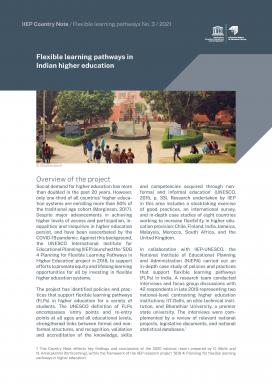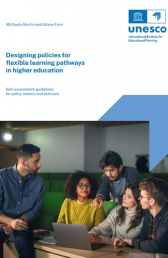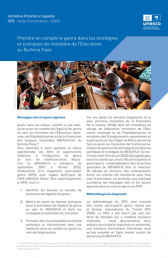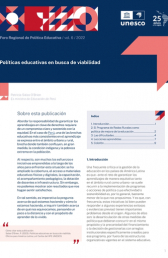
Version en ligne
A propos de la publication
Social demand for higher education has more than doubled in the past 20 years. However, only one-third of all countries’ higher education systems are enrolling more than 50% of the traditional age cohort. Despite major advancements in achieving higher levels of access and participation, inequalities and inequities in higher education persist, and have been exacerbated by the COVID-19 pandemic. Against this background, the IIEP launched the ‘SDG 4 Planning for Flexible Learning Pathways in Higher Education’ project in 2018, to support efforts to promote equity and lifelong learning opportunities for all by investing in flexible higher education systems. The project has identified policies and practices that support flexible learning pathways (FLPs) in higher education for a variety of students. The UNESCO definition of FLPs encompasses ‘entry points and re-entry points at all ages and all educational levels, strengthened links between formal and nonformal structures, and recognition, validation and accreditation of the knowledge, skills and competencies acquired through nonformal and informal education. Research undertaken by IIEP in this area includes a stocktaking exercise of good practices, an international survey, and in-depth case studies of eight countries working to increase flexibility in higher education provision: Chile, Finland, India, Jamaica, Malaysia, Morocco, South Africa, and the United Kingdom.









